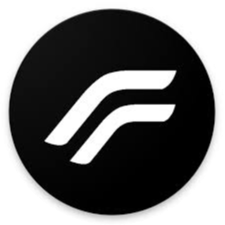#
Setup Guide
#
1. Prerequisites
Before installing and running Razor, ensure you have the following:
- Node.js v20 LTS — Download here
- Git — Windows | Linux
- A Code Editor — e.g., Visual Studio Code
- MongoDB URI — Get one free from MongoDB Atlas
- Your Discord Bot Token — Get it from the Discord Developer Portal
#
2. Installing Node.js v20 LTS
#
Download Node.js:
- Visit the official Node.js website.
- Download the v20 LTS installer for your operating system (Windows, macOS, or Linux).
#
Install Node.js:
- Run the installer and follow the prompts to complete the installation.
- Make sure to check the option to install npm (Node Package Manager) during the installation process.
#
Verify Installation:
- Open a terminal or command prompt.
- Type
node -vand press Enter. This should output the installed Node.js version (e.g., v20.x.x). Similarly, typenpm -vto check the npm version.
#
3. Extracting the Files
#
Locate the ZIP File:
- Once the download is complete, locate the downloaded ZIP file on your computer.
#
Extract the Files:
- Right-click on the ZIP file and choose "Extract All..." if you are using Windows, or select "Extract Here" or "Extract to [Folder Name]" if you are using WinRAR or 7-Zip.
- Choose a destination folder where you want to extract the files. It’s recommended to extract them to a dedicated folder named razor-bot or something similar.
#
Check Extracted Files:
- Open the folder where you extracted the files to ensure all files and directories are present and extracted correctly.
#
4. Installing NPM Packages
#
Install Dependencies:
- In the terminal of the source code directory, run the following command to install all necessary npm packages:
npm installOR
npm install --force
// In Case If The npm install doesn't work :)- This will read the
package.jsonfile and install all required dependencies.
#
5. Configuring config.js and .env
#
Configuring config.js
#
1. Open config.js:
- Use your preferred text editor to open the
config.jsfile located in the bot’s root directory.
#
2. Edit Configuration Settings:
- Fill in the necessary configuration details such as the bot’s prefix, owner ID, and other customizable settings.
- Example:
module.exports = {
prefix: '!', // Your bot's prefix
ownerID: 'YOUR_DISCORD_ID', // Your Discord user ID
// Add other configurations as needed and yeah its example
};
#
Setting Up .env
#
1. Rename env File:
- Rename
example.envto .env
#
2. Add Environment Variables:
- Open the
.envfile in your text editor and add your Discord bot token and other sensitive information. - Example:
############# BOT INFO #############
clientId=
############ BOT SETTINGS #############
token=
mongodbURL=
############ USER SETTINGS #############
developerId=
############ PRIVACY SETTINGS #############
licensekey=Replace token with your actual bot token, mongodbURL with your MongoDB connection string if the bot uses a database, clientId with your Bots ClientID/UserID, developerId with your Discord user ID, licensekey with your license key issued by Razor Development and if not issued join Support Server and open a ticket!.
#
5. Running Razor
#
Start the Bot:
- In the terminal, run the following command to start the bot:
node index.js
